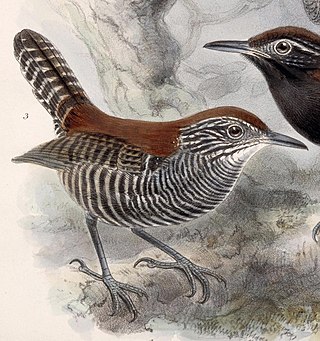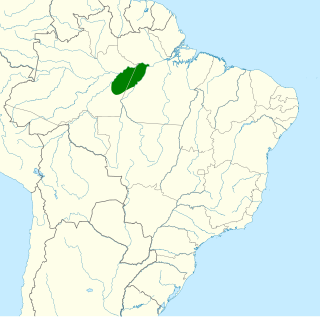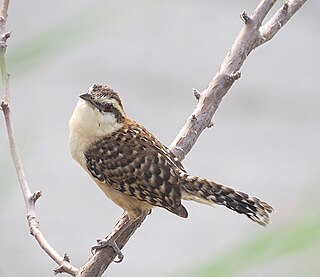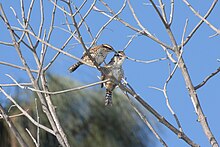
The white-headed wren is a species of bird in the family Troglodytidae. It is found in Colombia and Panama.

The fasciated wren is a species of bird in the family Troglodytidae. It is found in Ecuador and Peru.

Boucard's wren is a species of bird in the family Troglodytidae. It is endemic to Mexico.

The gray-barred wren is a species of bird in the family Troglodytidae. It is endemic to Mexico.

The fulvous wren is a species of bird in the family Troglodytidae. It is found in Bolivia and Peru.

The Mérida wren, or paramo wren, is a species of bird in the family Troglodytidae. It is endemic to Venezuela.

The black-throated wren is a species of bird in the family Troglodytidae. It is found in Costa Rica, Nicaragua, and Panama.

The moustached wren is a species of bird in the family Troglodytidae. It is found in Bolivia, Brazil, and Peru.

The grey wren is a species of bird in the family Troglodytidae. It is endemic to the southwestern part of Amazonas state in Brazil. This small, poorly known wren somewhat resembles a house wren, but its upperparts are gray.

The spot-breasted wren is a species of bird in the family Troglodytidae. It is found in Belize, Costa Rica, El Salvador, Guatemala, Honduras, Mexico, and Nicaragua.

The whiskered wren is a species of bird in the family Troglodytidae. It is found in Colombia, Ecuador, and Venezuela.

The riverside wren is a species of bird in the family Troglodytidae. It is found in Costa Rica and Panama.

The superciliated wren is a species of bird in the family Troglodytidae. It is found in Ecuador and Peru.

The stripe-breasted wren is a species of bird in the family Troglodytidae. It is found in Honduras, Nicaragua, Costa Rica, and Panama.

The mountain wren is a species of bird in the family Troglodytidae. It is found in the Andes of northwestern Argentina, Bolivia, Colombia, Ecuador, Peru, and western Venezuela.

The brown-chested barbet, also called cinnamon-breasted barbet, is a species of bird in the family Capitonidae, the New World barbets. It is endemic to Brazil's central Amazon Basin.

The cactus wren is a species of wren endemic to the deserts of the southwestern United States and northern and central Mexico. It is the state bird of Arizona, and the largest wren in the United States. Its plumage is brown, with black and white spots as markings. It has a distinctive white eyebrow that sweeps to the nape of the neck. The chest is white, whereas the underparts are cinnamon-buff colored. Both sexes appear similar. The tail, as well as flight feathers, are barred in black and white. Their song is a loud raspy chirrup; akin in the description of some ornithologists to the sound of a car engine that will not start. It is well-adapted to its native desert environment, and the birds can meet their water needs from their diet which consists chiefly of insects, but also of some plant matter. The cactus wren is a poor flier and generally forages for food on the ground. Ornithologists generally recognize seven subspecies, with the exact taxonomy under dispute.

Sclater's wren is a songbird of the family Troglodytidae. It is endemic to Mexico.

The canebrake wren is a species of bird in the family Troglodytidae. It is found in Costa Rica, Nicaragua, and Panama.

The Veracruz wren is a songbird of the family Troglodytidae. It is endemic to Mexico.






















